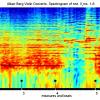I'm fairly sure someone here must have already discovered this but..
http://www.justanswe...-ve-trying-find-this-n-hexanoic-tyr-ile.htmlI am very excited about the group buy potential here (I am in), this compound looks to be the most promising of all which I've seen discussed on these forums.
It truly seems to be the case that something this capable of increasing synaptic density could increase brain functionality to the levels that we're all here seeking,
and even the prospect of this coming to fruition is inspiring to me. I mean...I would absolutely
love to learn as well and easily as I did when I was a child (even .5 or .25 as well lol).
Some caveats (wrt overall efficacy) exist, for example existing neural architecture/genetics seems to be at least pseudo-optimized for minimizing the noise/signal ratio , and increasing synaptic density to say, pre-synaptic pruning levels could introduce some (possibly) permanent negative changes (i.e. increase in noise signal ratio(n/s)). This is not necessarily going to happen of course, it's merely something to keep in mind, and I can definitely imagine other configurations which result in a
reduced n/s. That being said, I really don't think an increased n/s would be a good property to have in places like the brain stem, basal ganglia, amygdala, medial forebrain bundle, etc; i.e. places where a high n/s would have more than a negative "aesthetic" effect on consciousness. Obviously, any visual/auditory/somatosensory/premotor/motor cortex increase in noise could be uncomfortable, but it is more likely to be bearable in than the more fundamental areas.
Anyway
, regarding synaptic pruning itself, we can't say for sure whether or how this process will recur at later ages. It could be that it is primarily a process which occurs only once (due to some unknown dna/rna/structural mechanism), or, just as plausibly (if not moreso) it could be a primarily Hebbian process (i.e. you are born, and then a subset of the total number of synapses is used in a statistically "dominant" way, thereby removing the remainder of (unused) synapses from use and hence, existence. To be clear, the process seems to involve each of the mechanisms outlined above (plus a few others), but the question remains as to which is primary.One possible general solution (or mitigating factor) for the some of the above issues (and others which I haven't outlined) is "tight regulation of environment", meaning: very carefully filter out all possible perceptual field inputs which have a high probability of causing problems (determining the correct probability distribution could be impossible) or which do not positively reinforce the creation of the internal architecture which you want to live with day to day.
We'll interact with these things directly when we get there, but I just wanted to contribute some of my thoughts.
*I think everyone who wants it should have a chance to benefit maximally from this compound, and that is my only goal with these comments.*
Also critique/dialogue is welcome!






















































